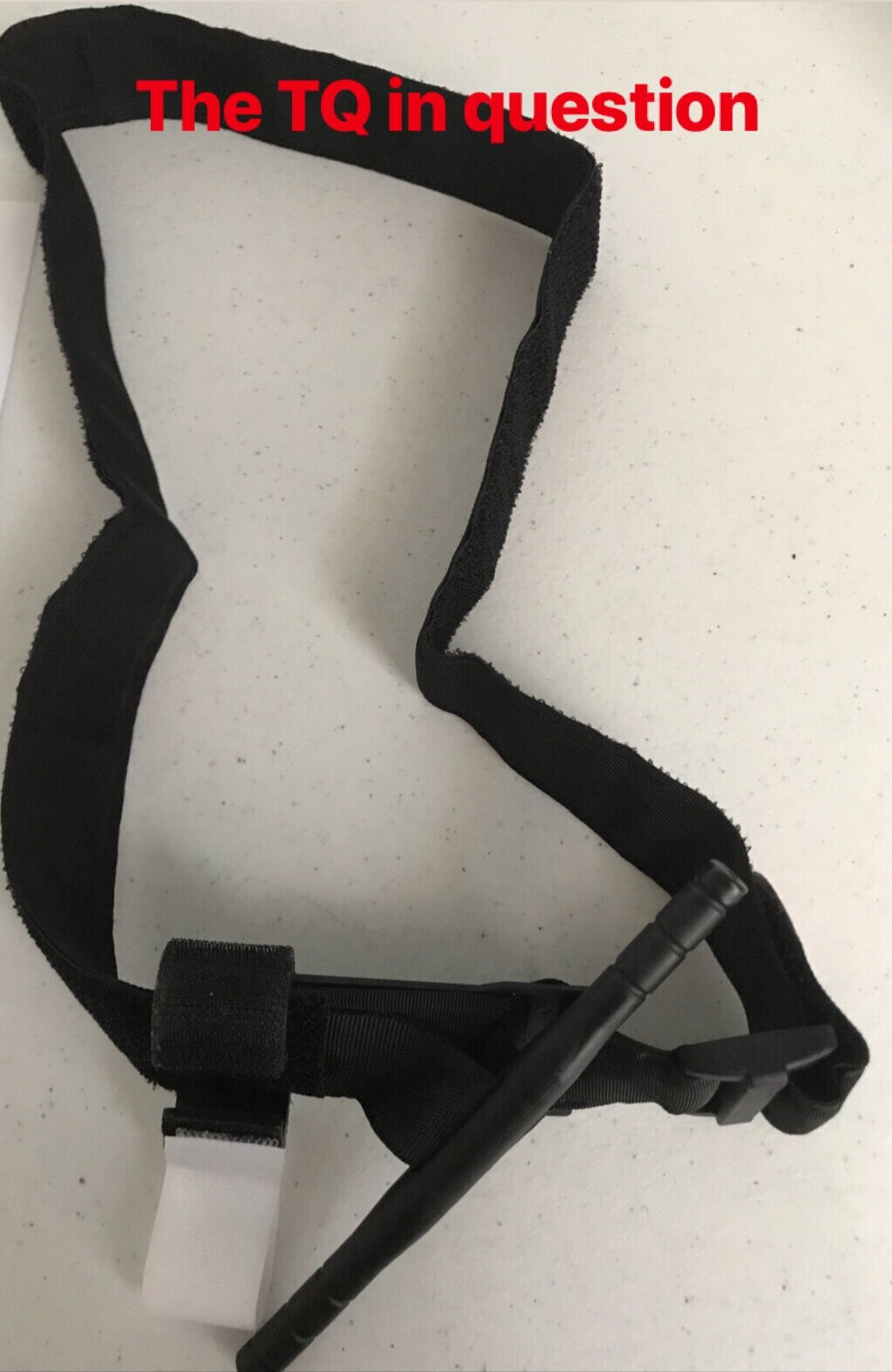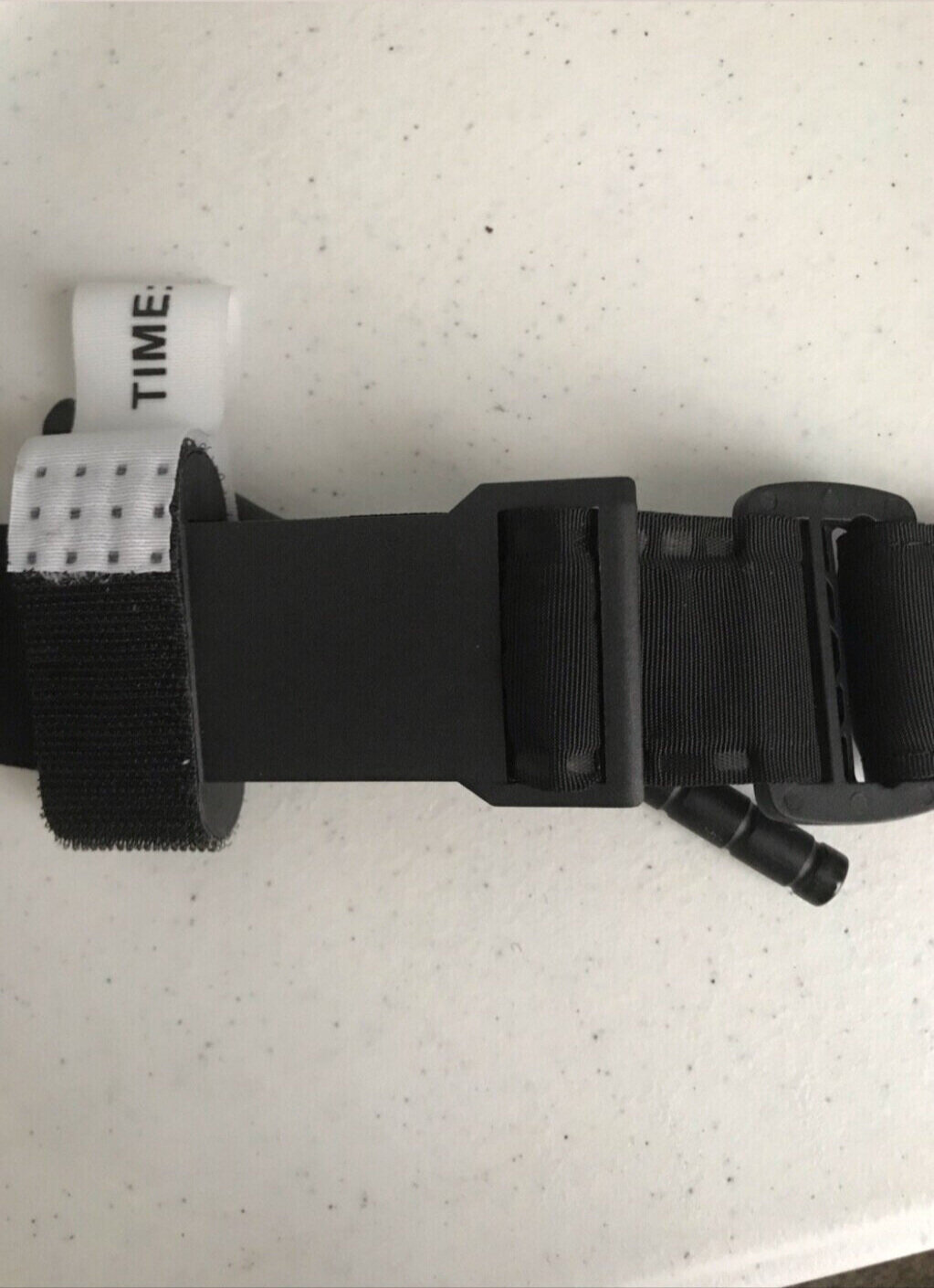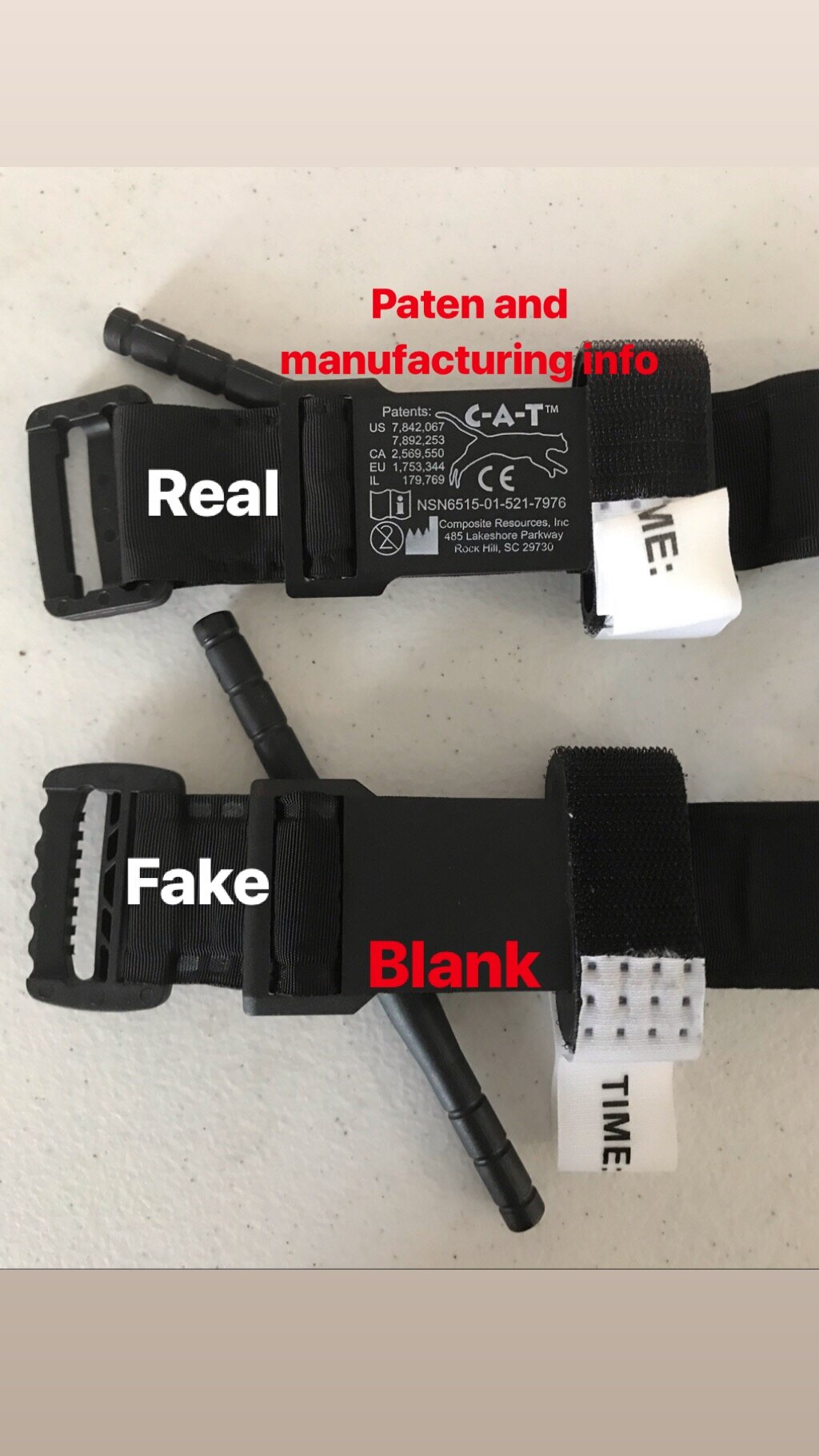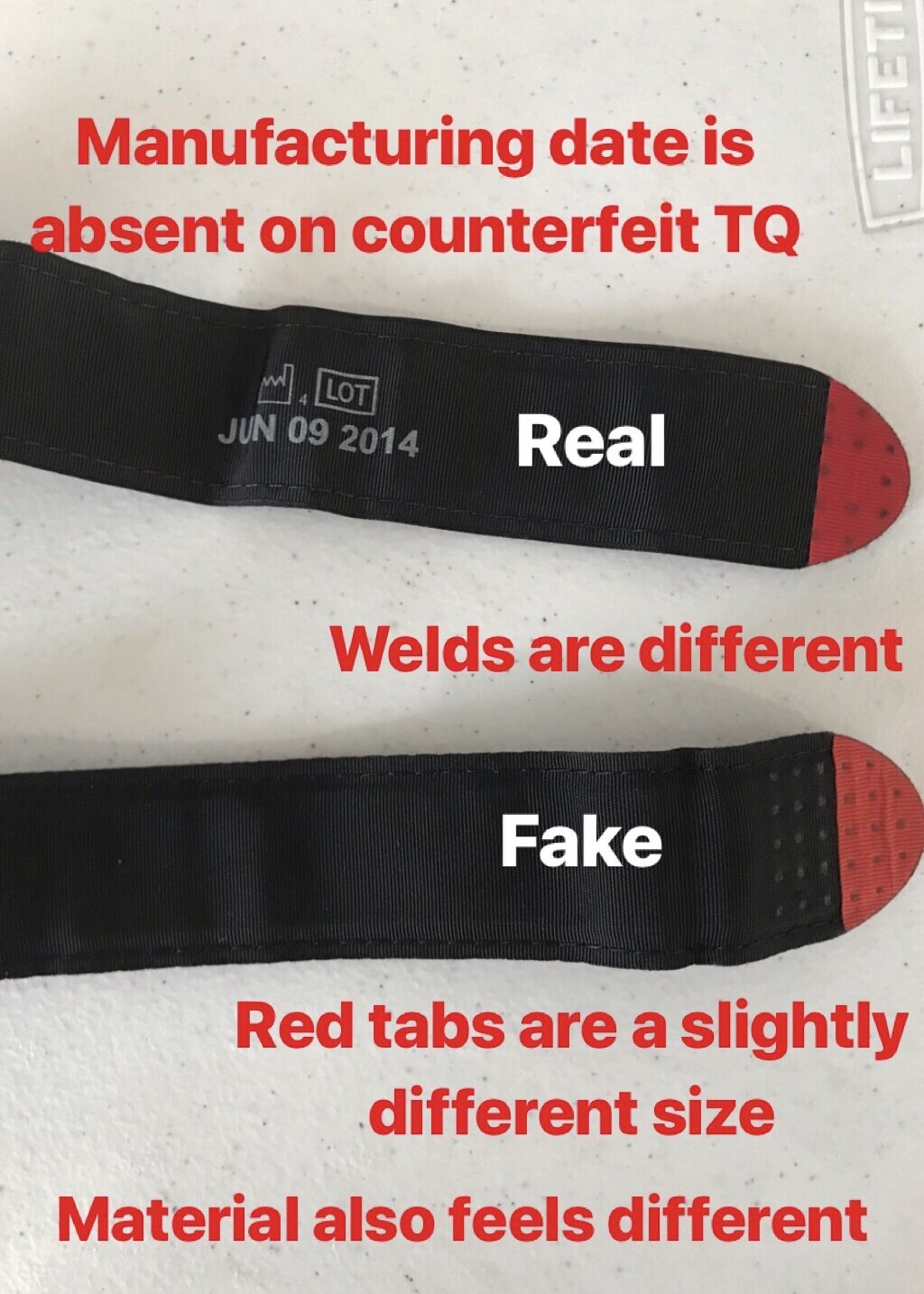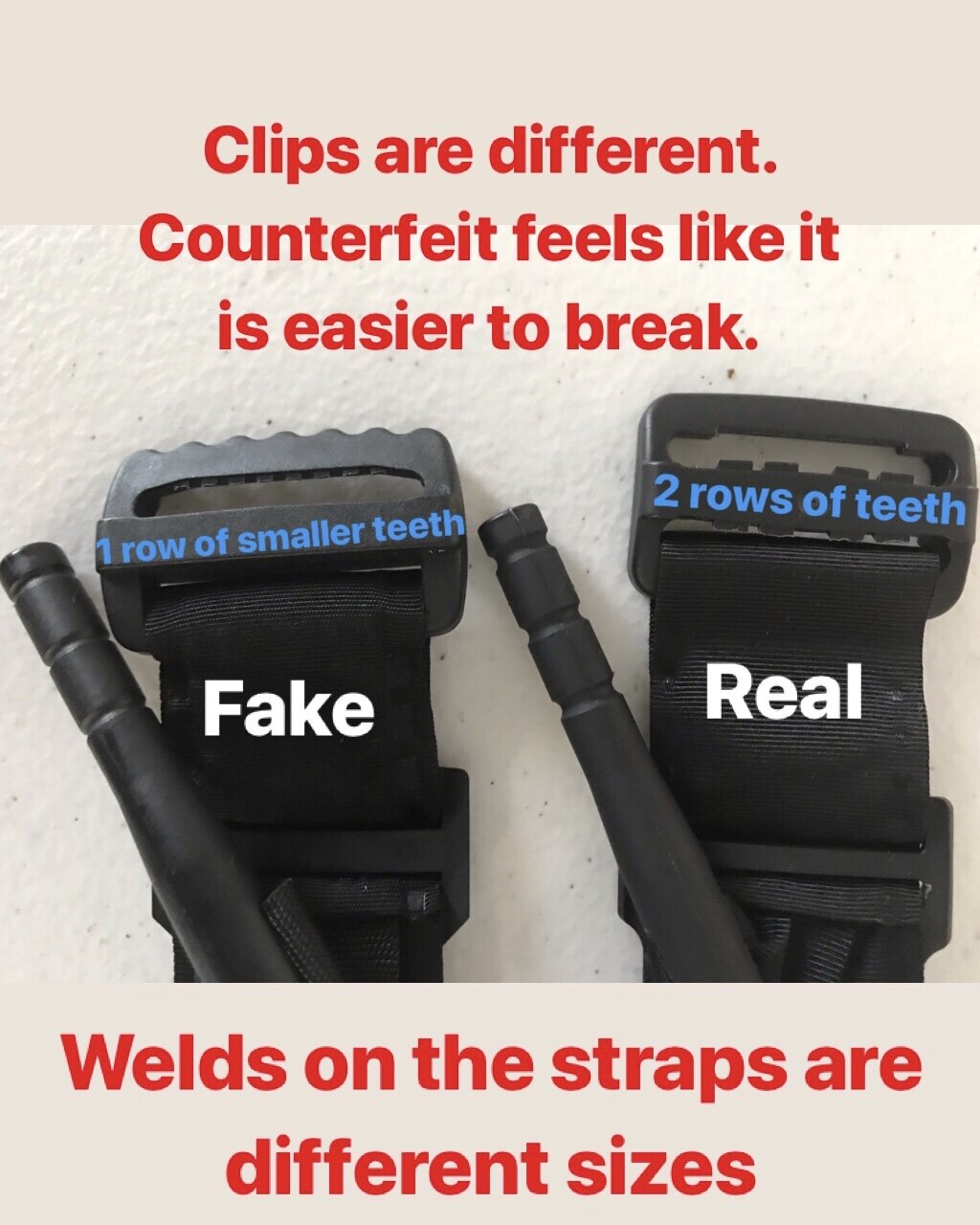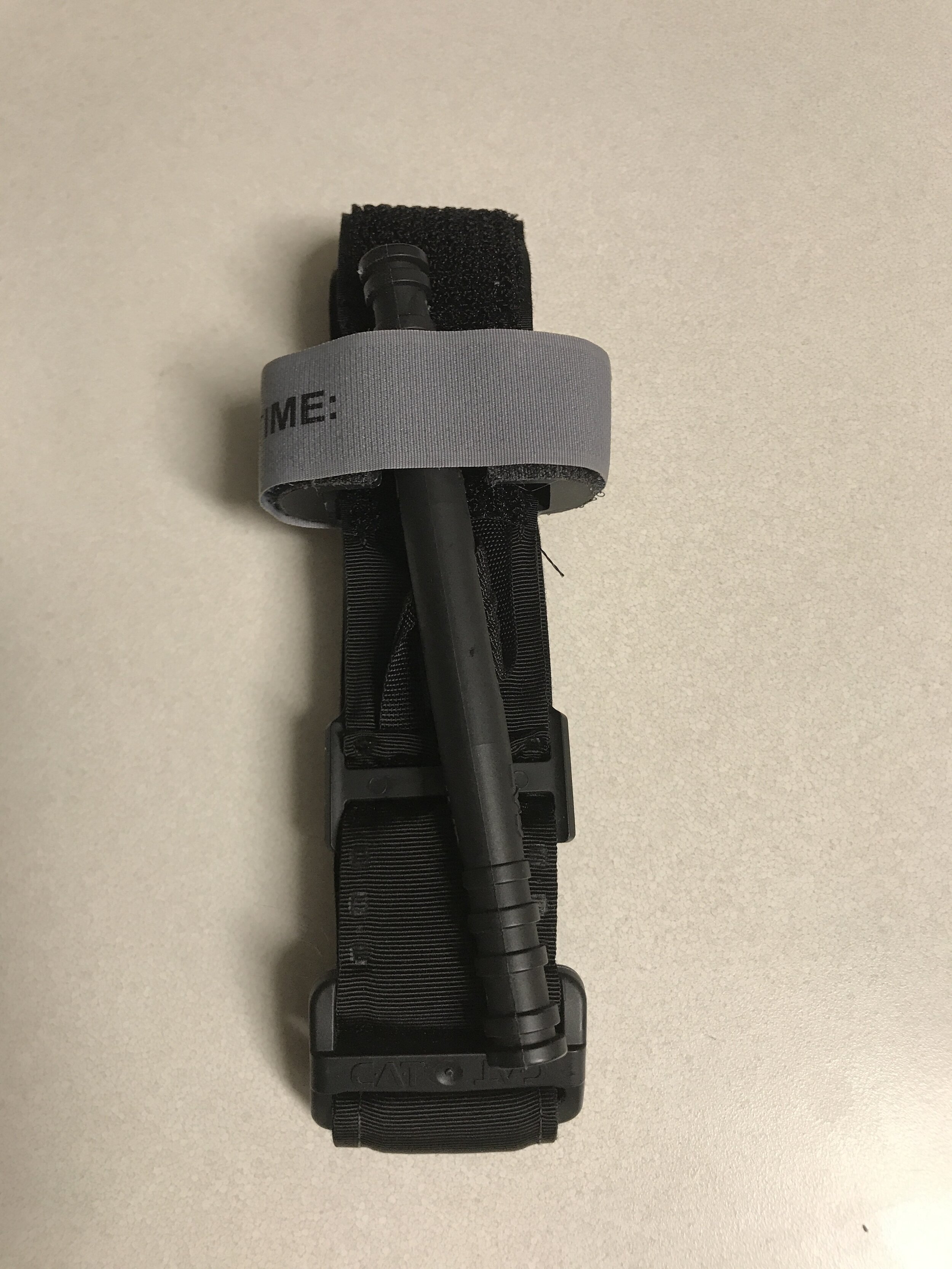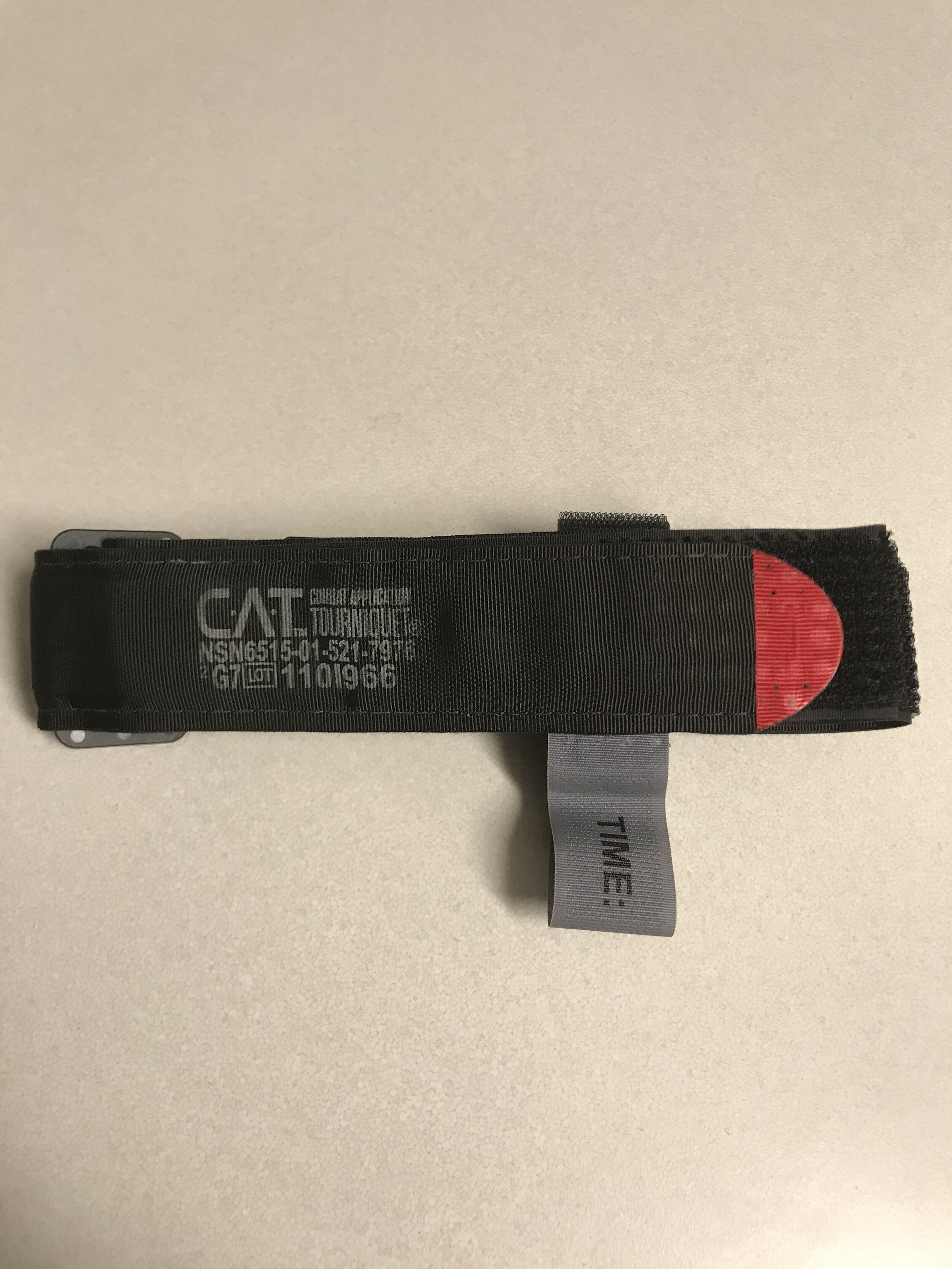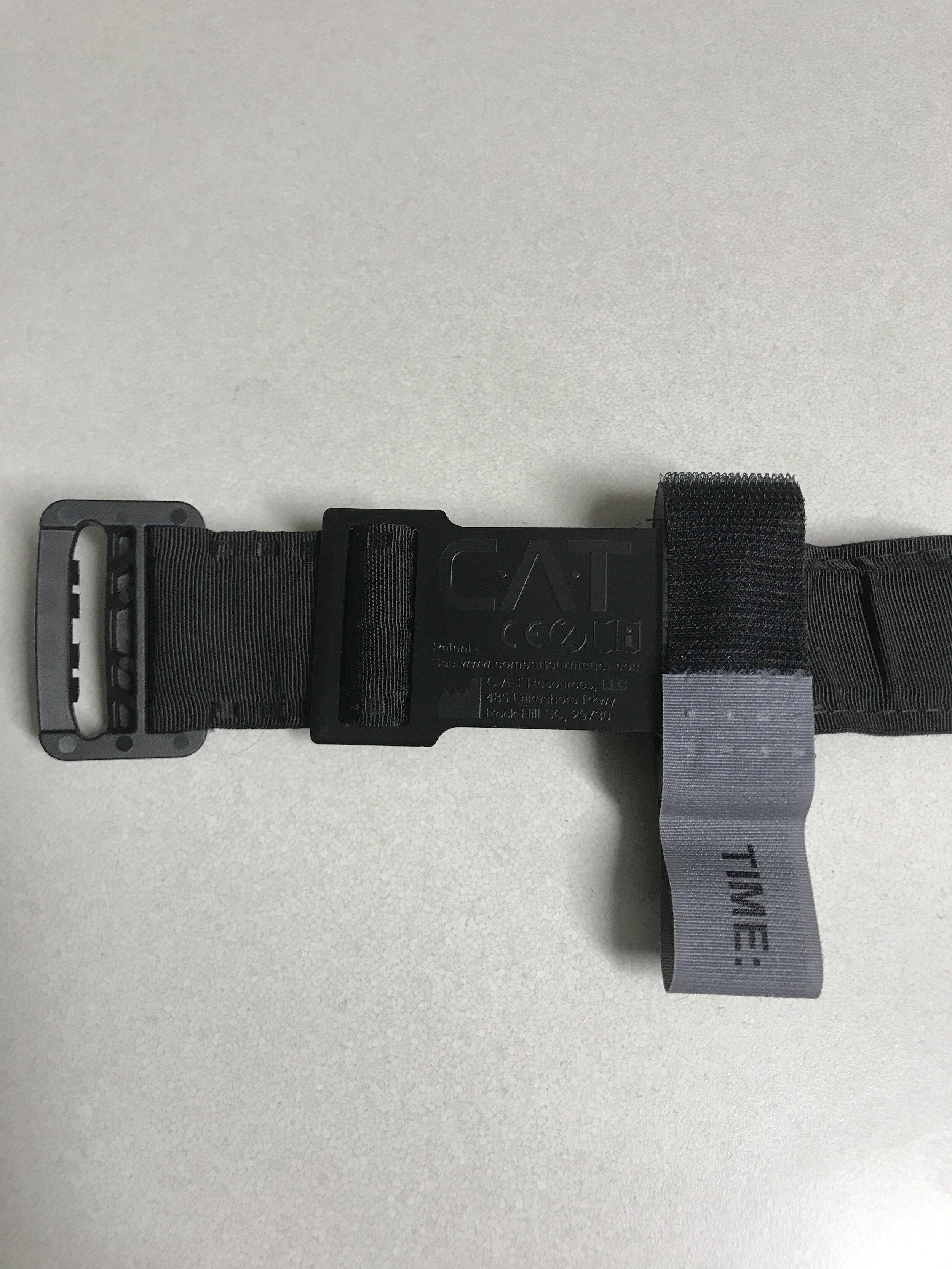Attention to Detail
I wanted to take the time to talk about an unfortunate reality in the world of emergency medicine. Specifically, the issue of counterfeit tourniquets.
On a recent Saturday, I spent the day teaching a tactical medical course to a couple of students with little to no medical training/experience. While we were going over tourniquet placement, how to put one on correctly, and what tourniquets are recommended to use, I asked to see what they carried in their bags. Both students already owned North American Rescue CAT 6 tourniquets. In my head I was thinking “Great! A little outdated but by no means are they wrong. Good on them for being prepared!” But then I took a closer look and saw that something was off about one of the TQs.
Looks like a standard CAT 6, right? I picked it up and immediately knew that this was in fact not a standard CAT 6. The strap felt like it wasn’t held together properly, the windlass felt harder and more brittle than normal, and the clip to put the strap through was bigger and looser than normal.
I asked the other student to hand me his CAT 6 so I could compare the two. It was then that I confirmed that the student had accidentally purchased a Chinese counterfeit CAT 6 tourniquet. Below are pictures with all of the discrepancies labeled.
The student stated that he had gotten the tourniquet off of the internet for only $14.00. Out of all of the discrepancies the tourniquet has, the price is the biggest sign that it is counterfeit. CAT tourniquets are generally in between $18-$30. Along with price, North American Rescue also has ended production of the CAT 6 and now only produces CAT 7 tourniquets (Pictured below) that have quite a few upgrades that separate it from the CAT 6.
You may be asking yourself, “Why is this important...?”. This is important because the counterfeit tourniquets on the market do not go through quality control and extensive durability tests. These tests are required to make sure that your TQ doesn’t snap while being tightened around the limb as well as cause increased damage where the TQ was placed. If the TQ snaps, the blood pressure behind the TQ will most likely blow out any clots that may have formed and greatly increase the chances of death due to loss of blood. Your life, or anyone else’s life, is worth the extra $10-$15 you would spend on a reliable and proven piece of medical equipment that has saved thousands of lives.
I would like to disclose that it is not the student’s fault that he bought the wrong tourniquet. He simply didn’t know that there was a risk of purchasing a counterfeit. That is why we train.
If you do go out and purchase a tourniquet, I highly suggest seeking out the proper training on how to use one, like Lodestone Training and Consulting’s med classes or others like them that follow TCCC protocols. Emergency medical skills are priceless to have. Bad things can happen anywhere at anytime and that time chooses you.
Don’t be a victim,
Nick

